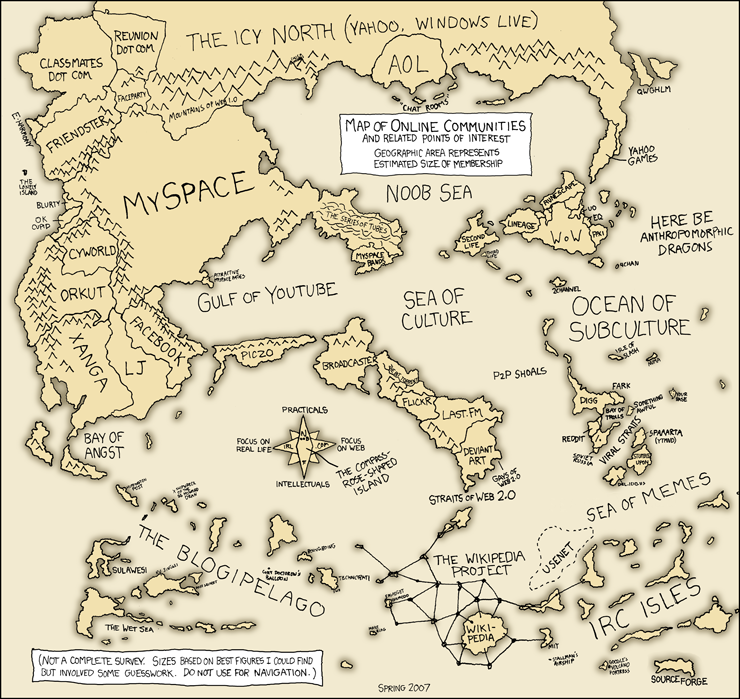I do love communications technologies. Communications is the foundation of effective organizations … communities. There are so many ways that we are able to virtually extend the various communities in our lives. If you reflect back on society 200 years ago, you can see how communities of people were limited to physical locality. There was no effective means of staying in contact – in anything close to real-time – with anyone more than a few miles away. With this communications infrastructure, there was simply no way for global distributed communities to exist.
Now … flash forward to 2007. Twitter appears on the scene. We already have the Internet and cell phones. E-mail and Instant Messaging have been around for over a decade and are now completely entrenched in society. Instant Messaging has even bridged to cell phones where many of the phones in use can also login to the various Instant Messaging networks. Oh, and blogs of course are everywhere. I am now able to communicate and keep in touch with all of my global virtual communities. People who I have not seen in years … who are not physically close … are still “close friends” as we have stayed in touch via IM or now Skype. Of course we also read each others blogs.
I was very skeptical of Twitter as first … not sure if I liked the idea of it. But just like any other new communications technology, I quickly began to see a pattern that I liked. When Twitter is used with friends, we can begin to gain insights into their lives. Phil Windley and I have talked about this, and we both seemed to notice a similar pattern … we are gaining new perspectives of friends and co-workers who are using Twitter to post short updates about their daily lives. I learned that Phil Windley takes bike rides, and also works on his yard. I found out that Phil Burns is into hiking up the mountains in the area, and also ran his first 5k.
When I began to look at Twitter in this new light … as a way to allows others to know what you are up to on a daily basis, this began to expand a new dimension in my relationship to my global virtual communities. The messages that I am getting on Twitter are significantly different from the e-mails, IMs, and blog posts that I am reading … these twits are crude updates about what these people are doing at various moments during their day. When I began to see this, I realized that what Twitter has created is a globally distributed “opt-in stalking” system!
Anyone can now create a simple way to be stalked … by almost any anonymous individual with access to the Internet. Twitter allows the stalked a variety of simple ways to update the world with where they are … or where they aren’t! Twitter also provides the new generation of stalker to monitor the goings on in any Twitterers life. People twit that they are out at a club, or home watching TV. They will twit about going on bike rides, and when they are at school. Stalkers now know when people are not at their home … hmmm, time for a burglery? They also know when they are out at some other public place … hmmm, time for a confrontational visit?
Don’t get me wrong … I’m actually a growing fan of Twitter … however I have started to see a lot of things that I like and don’t like about the service. It’s great as it is … and there is a lot of room for improvement. I’m actually working on an alternative system with some friends … we’re pushing to get a beta out the door by June 4th. It will provide some similar functionality, but also some new enhancements that can provide some privacy and control over who hears what.
In any case … I am a big fan of this new form of communications … of having a new way to learn more about people who are virtually in my life. I have long proposed Lemon’s Law of Effective Organizations:
The effectiveness of an organization is directly proportional to the quantity and quality of the communications within it.
Twitter is yet another form of communications that can contribute to the breadth of possible communications. If you haven’t tried it yet, you ought to!

